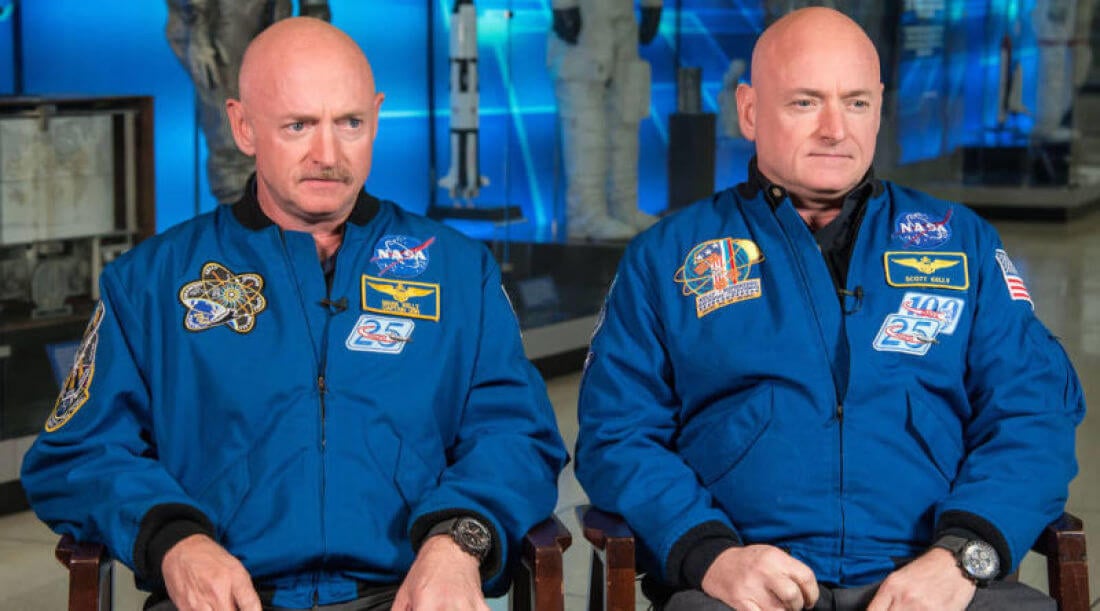
In 2016, the American astronaut Scott Kelly returned to Earth after a 340-day stay aboard the International space station (ISS). Such extended space travel became a part of the program space Agency NASA to study the effects of long stay in space, as well as testing the limits of human endurance with a long stay in microgravity. In the end all the same will have to face the astronauts who in the future will have to go to Mars and perhaps beyond.
In the experiment, called the Twin Study (“the Study of twins”), Scott Kelly conducted in earth orbit for almost a year while his twin brother mark Kelly, incidentally, is also an astronaut, was on the Ground. After the return of Scott on solid ground medical experts and scientists at NASA have embarked on medical research of the two brothers. These tests were supposed to show what the effect on the physical condition of Scott have had a long stay in space. The most recent results of this study suggests that Scott actually observed change, and down to the genetic level.
The first test results, published in late January of 2017, said that the body of Scott Kelly shows signs of inflammation, changes in the telomeres and telomerase (chromosomal constituent components of the system associated with the aging process), the change in bone density, and also in the gastrointestinal system. In fact, all of these items were somehow expected, say the researchers from NASA.

The astronaut twin Scott Kelly (left) and mark Kelly (right)
“Having completed the study of metabolites, cytokines and proteins, the scientists came to the conclusion that during space flight the astronaut’s body there was some lack of oxygen (anoxia), increased inflammatory processes, as well as a sharp change in the amount of nutrients that ultimately affect the expression of its genes… After the return of Scott to the Ground, his body went into a state of re-adaptation to earth’s gravity. Most of the body systems that have undergone changes in the framework of a long stay in space, upon returning home, quickly returned to normal. Some of its body returned to the baseline state within a few hours or days after planting, while others took longer – up to six months,” — commented at the time the Agency the findings of the medical Commission.
As object of research was taken and the possible genetic and psychological differences between the two brothers. More recently, these studies were completed. Results: after on-orbit for a year, Scott Kelly returned home in the literal sense of the other person. 93% gene Scott Kelly returned to normal after his return to Earth, while 7 percent — no. Scientists explain this “prolonged hypoxia, hypercapnia (excess CO2 in blood), as well as the many changes in genes associated with the proper functioning of the immune system, DNA repair processes and restoration of bone tissues”.
In other words, in addition to the already well-known effects of microgravity and muscle atrophy, loss of bone density, reduction of view — an example of Scott Kelly shows what the result of a long lack of oxygen and high content of carbon dioxide in the tissues of the body and how the body is ready to cope with these changes.
At the same time, the report stated that Scott Kelly was not observed any significant cognitive changes. Preliminary studies have shown a slight decrease in speed and accuracy of performance of cognitive tests compared to his brother, but in General, these changes were observed only in the first days after landing. After some time after adapting to earth’s gravity all of his brain functions returned to normal.
Professor, University of Pennsylvania Mathias Basner, who was head Ostpolitik studies Scott Kelly, also noted the lack of real differences in how the cognitive functions in astronauts, which was in orbit for 6 and 12 months. This observation is particularly important, given that people usually spend on Board the ISS in the framework of the space missions are not more than 3 months, while the same missions to Mars can take anywhere from 150 to 300 days, depending on the location of planets and spacecraft velocity at the time of these missions.
Flight to Mars and back, as well as being in low gravity conditions on the red planet can take several years. Therefore, studies like Twin studies, aims primarily to prepare a person for a very long space journey, which, according to the plans, should take place somewhere in the 2030-ies. It is necessary not only to understand all the possible health problems that may arise in the context of this flight, but it is also possible to minimize these effects.
Other person: how a year-long mission on the ISS influenced American astronaut
Nikolai Khizhnyak